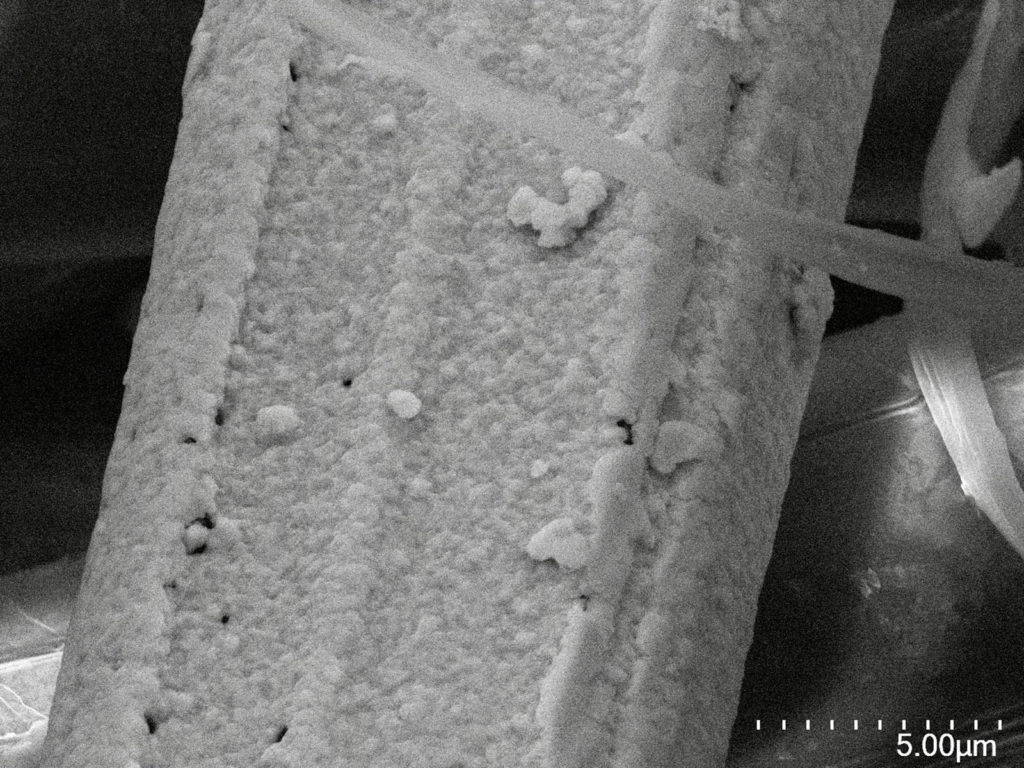
Flexible hybrid electronics show progress with advances in sensory yarns and fabrics.
by Dr. Marie O’Mahony
Flexible Hybrid Electronics (FHE) bring together capabilities from electronics, printing and material sectors including textiles, offering an alternative to product assembly with a more integrated approach for electronics and materials. Textiles-based FHE offer some unique solutions that are attracting the attention of markets such as wearables, automotive and medical.
In some instances, the benefits of textiles are obvious, offering comfort, tactility and aesthetics. Less intuitively, they can also be valued for their ability to combine comfort with invisibility or high visibility, and in these pandemic times even offering the possibility to avoid the need to reach out and touch completely.
Developments in yarn
At the recent intelliFLEX virtual conference CPES 2021 (Canadian Printed and Flexible Electronics Symposium) speakers presented new developments in FHE yarns with ready applications in wearables, as well as automotive and other sectors of textile industry markets.
Dr Zhiyi Zhang from the Advanced Electronics and Photonics Research Centre at the National Research Council of Canada (NRC) presented his group’s work on conductive yarns. In a patent-pending process, a reactive conductive ink with high wetting capability is used to coat the individual fiber. This is done by dipping the fiber in a bath of the conductive solution, with the fiber then cured at room temperature. This offers an easier and more cost-effective alternative to plating, providing greater flexibility for thread, including high-twist sewing thread, as well as yarn.
An important development for protective and military apparel is the creation of a conductive surface treatment and plating of aramid yarns, which is also patent pending.
Dr Thomas Stegmaier from the German Institutes of Textile + Fiber Research (DITF) presented the institute’s developments in sensory yarn undertaken with F. A. Kümpers GmbH. The development uses a conventional yarn that acts as a core, with the conductive and sensor filaments wound around it, helix-like, to offer sensory and heating capabilities.
Incorporated into a woven fabric to offer a grid-like structure, the MucorPrevent project, as the name suggests, detects and prevents mold. Historic buildings in Germany are prone to mold on interior walls caused by condensation when humidity levels rise above a certain level. Kümpers have direct experience dealing with the issue as they own a building complex constructed in the 18th century to house workers.
Now subject to historic monument protection, the exterior cannot be changed, but its replacement windows are airtight in keeping with building codes. This creates an issue because humidity formed by human activity inside the building can no longer be dissipated through the windows. The sensory fabric is incorporated into the plaster and applied to interior walls, so that humidity can be detected and heating activated to prevent mold from forming. DITF estimates that the system used in a typical storied house would have very low energy costs to maintain.

Management and monitoring
Dr S.F. Chiu, presenting the work of the Taiwan Textile Research Institute (TTRI), offered a direct comparison between a tape-based RFID tag and their development of a yarn RFID. The latter offers possibilities for use in supply chain management in textile manufacturing. Woven into the selvedge, it allows the specification of the fabric to be tracked and verified through the whole manufacturing process.
Each roll of fabric has its own unique identity that is carried through from the weave to the dye and finishing treatment. The information continues to the garment, with the potential to offer further benefits in determining different fibers and fabrics for separation during the recycling process.
“Virtually every automobile built today has Ontario-made technology inside,” according to Chris Begley, senior economic officer with Invest Ontario. In Montreal the CTT Group have been developing a contactless bio-monitoring system for the transport sector.
Specifically, it looks to address issues of driver fatigue and stress for long distance drivers. The National Transportation Safety Board (NTSB) point to this as a factor in 250 fatalities and over 20,000 injuries calling for regulators to develop and implement a plan to deploy in-vehicle technologies that reduce fatigue-related crashes. CTT is using heart rate sensors placed in the seat, combined with pressure sensors placed in the backrest of the seat to detect changes in the driver’s respiratory rate. Piezo-resistive films are used to detect breathing change in the driver, with the films placed between two conductive layers of a silver-plated nylon fabric.
The challenges posed during development and manufacturing continue to be addressed in the testing. CTT’s Dominic Lachapelle describes the need for the system to work for a variety of shapes and morphologies, as well as accounting for the driver’s clothing from t-shirts to heavy winter jackets.
As it is becoming more established, FHE is entering a new stage in development that is being marked by an openness to novel product ideas and new materials that can offer flexibility and often stretch, invisibility or conversely increasing visibility. Textiles are proving themselves to be a very accommodating material for FHE.
Marie O’Mahony, Ph.D., is an industry consultant, author and academic. She is the author of several books on advanced and smart textiles published by Thames and Hudson, and she is Visiting Professor at the Royal College of Art London.
 TEXTILES.ORG
TEXTILES.ORG


